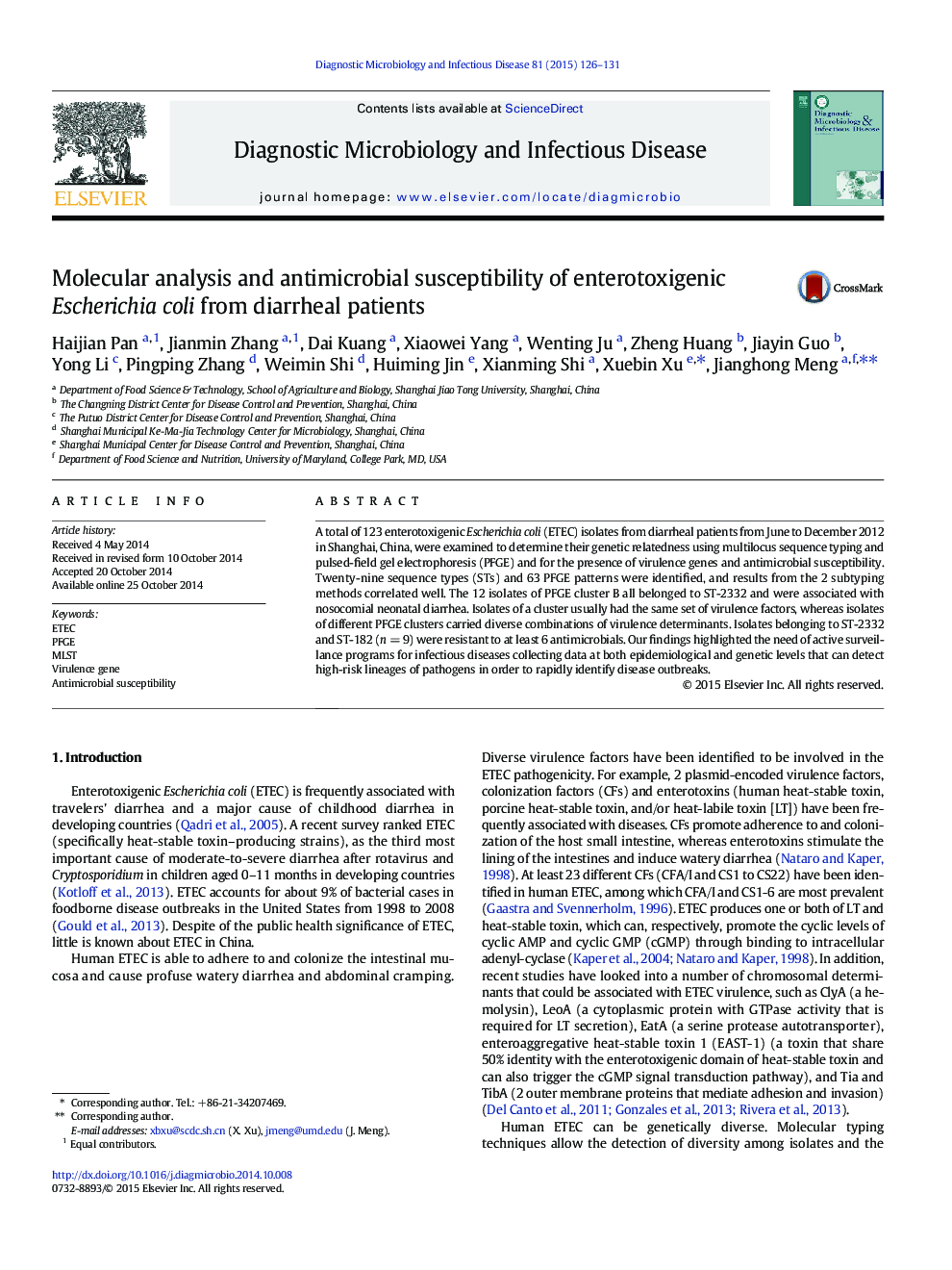| Article ID | Journal | Published Year | Pages | File Type |
|---|---|---|---|---|
| 3346910 | Diagnostic Microbiology and Infectious Disease | 2015 | 6 Pages |
•Several predominant enterotoxigenic Escherichia coli clones in Shanghai, China, were identified by both pulsed-field gel electrophoresis and multilocus sequence typing analysis in this study.•Isolates of different clones carried different plasmid and chromosome-encoded virulence factors.•Several multidrug-resistant clones were identified.•We identified a clone involved in nosocomial neonatal diarrhea, and it was also a multidrug-resistant clone.
A total of 123 enterotoxigenic Escherichia coli (ETEC) isolates from diarrheal patients from June to December 2012 in Shanghai, China, were examined to determine their genetic relatedness using multilocus sequence typing and pulsed-field gel electrophoresis (PFGE) and for the presence of virulence genes and antimicrobial susceptibility. Twenty-nine sequence types (STs) and 63 PFGE patterns were identified, and results from the 2 subtyping methods correlated well. The 12 isolates of PFGE cluster B all belonged to ST-2332 and were associated with nosocomial neonatal diarrhea. Isolates of a cluster usually had the same set of virulence factors, whereas isolates of different PFGE clusters carried diverse combinations of virulence determinants. Isolates belonging to ST-2332 and ST-182 (n = 9) were resistant to at least 6 antimicrobials. Our findings highlighted the need of active surveillance programs for infectious diseases collecting data at both epidemiological and genetic levels that can detect high-risk lineages of pathogens in order to rapidly identify disease outbreaks.
